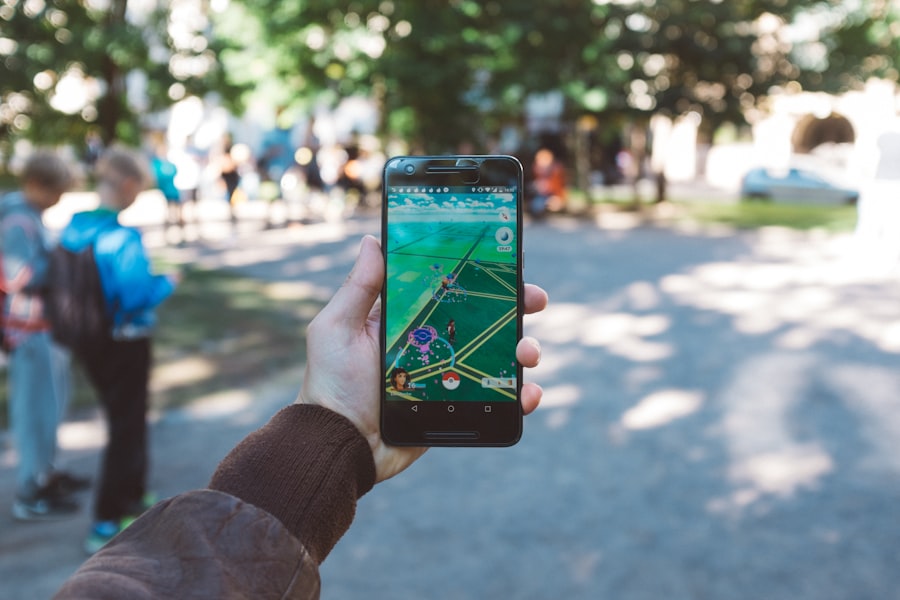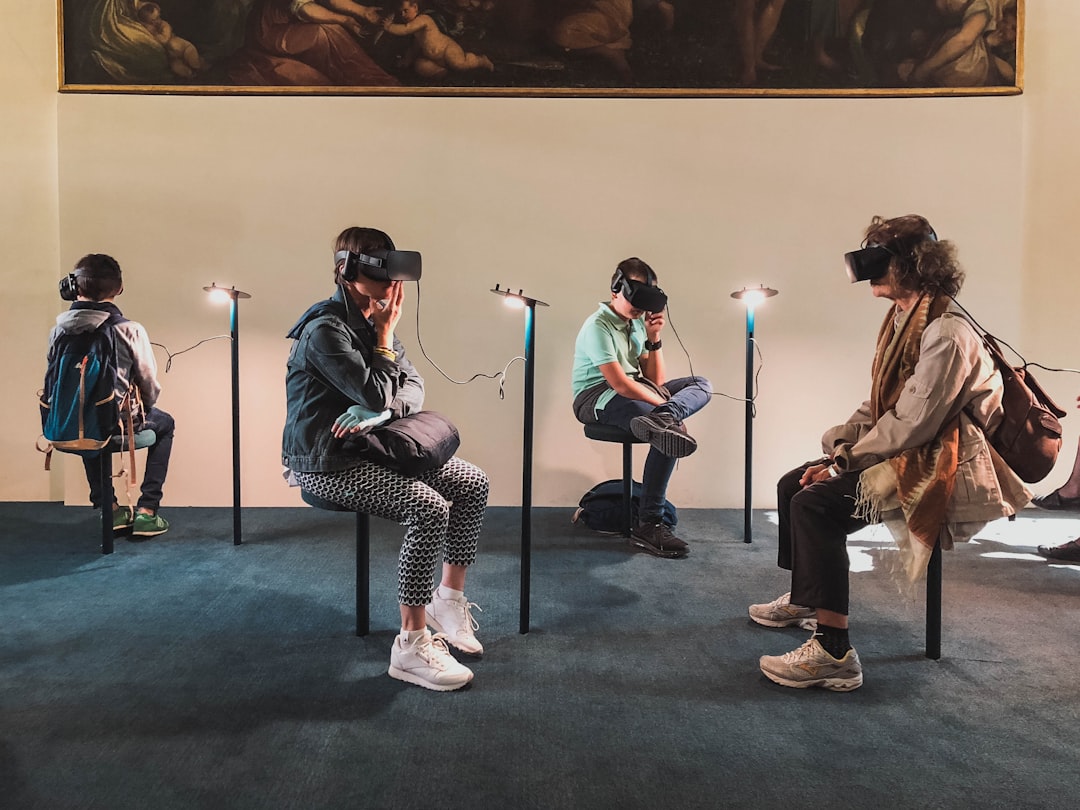In recent years, you may have noticed a significant shift in the way haunted attractions are designed and experienced. Gone are the days when a simple walk through a dimly lit corridor filled with static props would suffice. Instead, immersive haunts have taken center stage, transforming the traditional haunted house into a multi-sensory experience that captivates and engages visitors on a deeper level.
This evolution is not merely a trend; it reflects a growing demand for more interactive and engaging entertainment options. As you step into these immersive environments, you find yourself not just an observer but an active participant in the unfolding narrative. The rise of immersive haunts can be attributed to several factors, including advancements in technology, changing consumer preferences, and the desire for unique experiences.
You may have noticed that audiences are increasingly seeking out attractions that offer more than just scares; they crave stories that resonate with them and environments that transport them to another world. This shift has led to the emergence of themed experiences that blend elements of theater, gaming, and storytelling, creating a rich tapestry of fear and excitement. As you navigate through these spaces, you become part of the story, making choices that influence your journey and heightening the overall thrill.
Key Takeaways
- Immersive haunts are becoming increasingly popular, offering a more interactive and engaging experience for guests.
- Interactive technology plays a crucial role in enhancing the overall experience of haunted houses, allowing for more personalized and immersive scares.
- Virtual reality and augmented reality are being integrated into haunted houses, providing a new level of terror and excitement for visitors.
- Interactive props and special effects are key components in creating a truly immersive and terrifying experience for guests.
- Creating a unique and memorable experience for guests involves careful planning, attention to detail, and a focus on storytelling and atmosphere.
The Role of Interactive Technology
As you delve deeper into the world of immersive haunts, you’ll discover that interactive technology plays a pivotal role in shaping these experiences. From augmented reality (AR) to virtual reality (VR), these tools enhance the storytelling aspect and allow for a more personalized encounter. Imagine walking through a haunted mansion where your smartphone reveals hidden messages or ghostly apparitions when viewed through an app.
This integration of technology not only amplifies the fear factor but also encourages you to engage with your surroundings in ways that were previously unimaginable. Moreover, interactive technology fosters a sense of agency among guests. You are no longer just a passive observer; instead, you have the power to influence the narrative.
Whether it’s solving puzzles to unlock new areas or making choices that determine your fate, these elements create a dynamic experience that keeps you on your toes. The thrill of uncertainty adds an extra layer of excitement, as you never quite know what will happen next. This interactivity is what sets immersive haunts apart from traditional attractions, making each visit unique and memorable.
Virtual Reality and Augmented Reality in Haunted Houses

Virtual reality and augmented reality have revolutionized the haunted house experience, allowing you to step into worlds that blur the lines between fiction and reality. With VR headsets, you can find yourself in a terrifying environment where every sound and visual detail is designed to elicit fear. You might be chased by a ghostly figure or trapped in a room filled with unsettling imagery, all while feeling as though you are truly part of the scene.
This level of immersion is unparalleled, as it engages your senses and emotions in ways that traditional attractions cannot. On the other hand, augmented reality enhances your experience by overlaying digital elements onto the physical world. As you walk through a haunted house, AR can bring static props to life, allowing you to interact with them in real-time.
You might see ghostly figures appear in front of you or receive clues that guide you through the narrative. This fusion of the real and virtual worlds creates an engaging atmosphere that keeps you invested in the story unfolding around you. The combination of VR and AR not only amplifies the horror but also encourages exploration and interaction, making each visit an adventure filled with surprises.
Interactive Props and Special Effects
In addition to cutting-edge technology, interactive props and special effects play a crucial role in creating an unforgettable haunt experience. As you wander through these immersive environments, you’ll encounter props that respond to your actions, enhancing the overall atmosphere. For instance, a seemingly ordinary door might creak open when you approach it, revealing a hidden passage or triggering a chilling sound effect.
These interactive elements draw you into the narrative, making you feel as though your presence has a direct impact on the unfolding story. Special effects also contribute significantly to the immersive experience. From fog machines that create an eerie ambiance to animatronics that spring to life at just the right moment, these effects heighten your senses and amplify the fear factor.
You may find yourself jumping at unexpected sounds or feeling a chill run down your spine as you navigate through dark corridors filled with unsettling visuals. The combination of interactive props and special effects creates a rich tapestry of fear that lingers long after you’ve left the haunt.
Creating a Unique Experience for Guests
One of the defining characteristics of immersive haunts is their ability to create unique experiences tailored to individual guests. As you enter these attractions, you may be greeted by actors who engage with you personally, setting the tone for your journey ahead. This level of interaction fosters a sense of connection between you and the performers, making the experience feel more intimate and engaging.
You might find yourself drawn into conversations or even given specific tasks to complete as part of the narrative. Furthermore, many immersive haunts incorporate branching storylines that allow for multiple outcomes based on your choices throughout the experience. This means that no two visits are ever quite the same; each time you enter, you have the opportunity to explore different paths and uncover new layers of the story.
This element of unpredictability keeps you coming back for more, eager to discover what lies behind each door or around every corner. The commitment to creating unique experiences ensures that guests leave with lasting memories and stories to share.
Safety and Ethical Considerations

While the thrill of immersive haunts is undeniable, safety and ethical considerations must also be at the forefront of their design. As you navigate through these attractions, it’s essential to recognize that not all guests may respond to fear in the same way. Some individuals may experience heightened anxiety or panic in intense situations, so it’s crucial for operators to implement measures that prioritize guest safety without compromising the overall experience.
Additionally, ethical considerations come into play when designing narratives that involve sensitive themes or topics. As you engage with these stories, it’s important for creators to be mindful of how certain elements may affect different audiences. Striking a balance between fear and respect ensures that all guests can enjoy their experience without feeling uncomfortable or triggered by specific content.
By prioritizing safety and ethical storytelling, immersive haunts can create an environment where everyone feels welcome and engaged.
The Future of Immersive Haunts
As technology continues to evolve, so too will the world of immersive haunts. You can expect to see even more innovative approaches to storytelling and interactivity in the coming years. With advancements in artificial intelligence and machine learning, attractions may become increasingly personalized based on individual guest preferences and behaviors.
Imagine entering a haunt where every element is tailored specifically to your fears and interests—this level of customization could redefine what it means to be immersed in a haunted experience. Moreover, as virtual reality becomes more accessible, we may witness a rise in home-based immersive experiences that allow you to create your own haunted adventures from the comfort of your living room. This shift could open up new avenues for creativity and engagement, enabling individuals to explore their fears in unique ways without needing to visit a physical location.
The future of immersive haunts is bright, filled with endless possibilities for innovation and exploration.
Tips for Creating an Interactive Haunted House
If you’re considering creating your own interactive haunted house experience, there are several key tips to keep in mind. First and foremost, focus on storytelling; develop a compelling narrative that draws guests in and encourages them to engage with their surroundings. Consider incorporating branching paths or multiple endings to enhance replayability and keep visitors coming back for more.
Next, invest in interactive technology and props that respond to guest actions. Whether it’s through augmented reality apps or animatronic figures that react to movement, these elements will elevate your haunt’s immersion factor significantly. Additionally, prioritize guest safety by implementing clear guidelines and ensuring that all actors are trained to handle various situations appropriately.
Finally, don’t forget about creating an atmosphere that captivates all senses—think about lighting, sound design, and even scents that evoke specific emotions or memories. By combining these elements thoughtfully, you’ll craft an unforgettable experience that leaves guests talking long after they’ve exited your haunt. In conclusion, immersive haunts represent a thrilling evolution in entertainment that invites guests like you to step into worlds filled with fear and excitement.
Through interactive technology, engaging narratives, and thoughtful design considerations, these attractions create unique experiences that resonate deeply with audiences. As you explore this ever-evolving landscape, you’ll find yourself captivated by the endless possibilities for creativity and innovation within the realm of immersive haunts.
If you’re interested in learning more about haunted attractions and interactive technology, be sure to check out Crooked Horror. This website offers a list of the best haunted attractions in the Midwest and top haunted house attractions in Germany. You can discover how interactive technology is being used to enhance the scare factor in these spooky locations.
FAQs
What is interactive technology in haunted houses?
Interactive technology in haunted houses refers to the use of various electronic and digital elements to enhance the scare factor and overall experience for visitors. This can include things like motion sensors, sound effects, projection mapping, virtual reality, and interactive props.
How is interactive technology used in haunted houses?
Interactive technology is used in haunted houses to create a more immersive and engaging experience for visitors. For example, motion sensors can trigger sudden movements or sounds, projection mapping can create realistic and dynamic visual effects, and virtual reality can transport visitors to different terrifying environments.
What are the benefits of using interactive technology in haunted houses?
Using interactive technology in haunted houses can help create a more memorable and thrilling experience for visitors. It can also allow for more flexibility and creativity in designing scares and effects, as well as providing opportunities for customization and personalization.
Are there any drawbacks to using interactive technology in haunted houses?
Some potential drawbacks of using interactive technology in haunted houses include the cost of implementing and maintaining the technology, as well as the potential for technical glitches or malfunctions that could disrupt the visitor experience. Additionally, some visitors may prefer a more traditional, low-tech haunted house experience.
What are some examples of interactive technology used in haunted houses?
Examples of interactive technology used in haunted houses include motion-activated props and animatronics, immersive sound and lighting effects, virtual reality experiences, interactive touchscreens or displays, and augmented reality elements. These technologies can be used to create a wide range of scares and surprises for visitors.

No responses yet